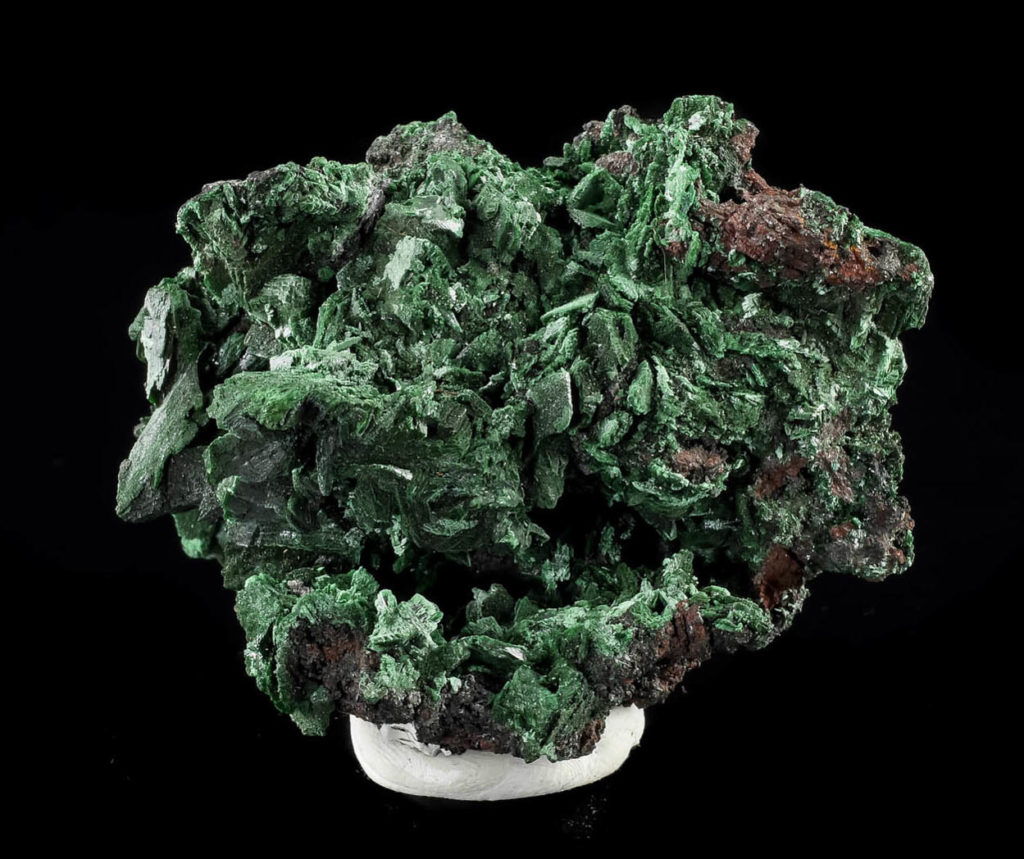There are over 50 countries in Africa and many of these nations are involved in mining as their primary economic activity. It is fair to say around half of these nations have produced mineral specimens. The most significant producers of mineral specimens in Africa are Namibia, Morocco, South Africa, the Democratic Republic of Congo, Madagascar, and Tanzania.  Each of these countries produces minerals that are drastically different from the others. Some African countries are occasional producers of specimens and have potential to produce more fine quality pieces with more exploration. Examples of these countries are Kenya, Ethiopia, Nigeria, Mozambique, Zimbabwe, Gabon, and Zambia. Many of these nations are not well developed and would likely see more production of mineral specimens as they become more developed nations in the future. Zambia is an example of an African nation that has become very developed recently and is starting to produce more mineral specimens.
Each of these countries produces minerals that are drastically different from the others. Some African countries are occasional producers of specimens and have potential to produce more fine quality pieces with more exploration. Examples of these countries are Kenya, Ethiopia, Nigeria, Mozambique, Zimbabwe, Gabon, and Zambia. Many of these nations are not well developed and would likely see more production of mineral specimens as they become more developed nations in the future. Zambia is an example of an African nation that has become very developed recently and is starting to produce more mineral specimens.
Namibia has the most diverse and many of the best mineral localities out of anywhere in Africa. Namibia’s most famous specimens come from pegmatites, vesicular basalts, and oxidized hydrothermal ore veins. Pegmatites and granitic environments in Namibia are known for aquamarine crystals, schorl, topaz, fluorite, and many other minerals. Vesicular basalts in Brandberg, Erongo region produce some of the world’s best amethyst. The crystals are often zoned, sceptered, and have many exotic inclusions.
The Tsumeb Mine in Namibia is known worldwide for both its incredible array of rare species, more than anywhere else in the world, and for its gorgeous specimens of lead and copper secondary minerals. Tsumeb is famous for gorgeous pocket azurites as well as fine examples of many other secondary minerals such as malachite, cerussite, mimetite, and smithsonite.
Morocco has produced a tremendous amount of mineral specimens in the past few years. The most popular specimens from Morocco are its Vanadinites, which occur as large red-orange hexagonal crystals typically on a matrix of manganese oxides, baryte, cerussite, galena, and other minerals. These specimens originate from Mibladen, Morocco and are dug by the thousands from former lead mines. Morocco has also produced some of the finest cobalt minerals in the world from the Bou Azer District. Bou Azer is especially famous for its large erythrite fans, which are found in oxidized cobalt and silver ore as purple rhombic shaped books. Morocco seems to constantly produce new and different finds. Aside from what is mentioned above, Morocco also produces popular specimens of malachite, azurite, fluorite, anglesite, baryte, prehnite, titanite, geodes, and fossils.

South Africa, though most famous for diamond, gold, and platinum mining has several mines in the Kalahari Manganese Field that produce a gorgeous variety of unique minerals. These mines are known for many unusual and colorful species such as olmiite, ettringite, rhodochrosite, bixbiyite, braunite, manganocalcite, andradite, and many others. South Africa has also produced some amazing fluorite and quartz specimens from the banks of the Orange River.

Numerous other countries from Africa are known for producing fine minerals. Madagascar, Mozambique, Nigeria, and Zimbabwe are known for gorgeous tourmalines and beryls. Ethiopia’s amazonite and smoky quartz mines yield specimens similar to those from Colorado. The Democratic Rebublic of Congo is known for its high quality malachite and for its suite of rare uranium minerals. There are still many more finds to be made in Africa.
